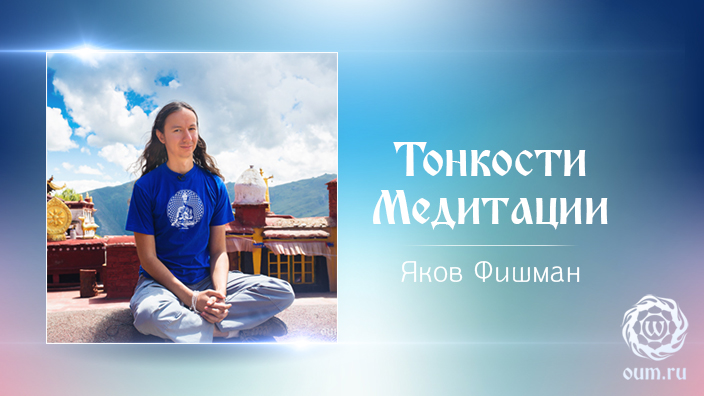Mmeditation, or dhyana (as it is called in Sanskrit), is a method of curbing a restless mind. What is it for? As Buddha Shakyamuni himself said: “There is no happiness equal to peace.” And it’s hard to add anything else to it. In fact, peace of mind is the key to happiness. For the cause of all our experiences – anxieties, fears, irritability, hatred, anger, and so on – is precisely the restlessness of our mind. And meditation is able to curb our mind and make it our servant, not master.
There are many meditation practices: both very simple, accessible to everyone, and very complex, which take years to master. But among the many meditation practices, everyone can find something for themselves. And it cannot be said that any complex practice will be more effective than a simple one. It is the practice that is mastered to perfection that will be effective, and it does not matter if it is simple or complex.
Also, the question of choosing the practice of meditation can be viewed from the perspective of reincarnation. If a person practiced any meditation in past lives, then in this life he will no longer start from scratch, but will have some inclinations and experience in this particular practice. You have probably noticed that people often show inclinations towards one activity or another. And it happens that one person, for example, learns to draw all his life and even after twenty or thirty years he does not succeed well, while another person just picks up a brush and creates masterpieces in a week.
It is customary to declare this as the presence of “talent”, “gift”, and so on. But if you look at it from the perspective of reincarnation, then we can say that “talent” or “gift” is nothing more than experience from past lives. This, of course, is only one of the versions, but it has a right to exist. And if a person has been an artist from life to life, then a very small amount of time will be enough to remember all the acquired skills.
The same can be said about meditation – if a person has practiced any kind of meditation from life to life, then he just needs to get acquainted with it, and the effect can be noticeable from the first time. In any case, each has its own characteristics that determine the effectiveness of a particular practice. That is why everything is individual in this matter, and you should not focus too fanatically on anyone. What works for one person may not work for another. Therefore, it is recommended to try several practices and choose what will be effective for you. However, you should not practice everything at once at the same time – this will either have no effect, or it will be unpredictable.
So, let’s look at the simplest meditation practices that anyone can try. As mentioned above, everyone has their own inclinations, experience from past lives, their own strengths and weaknesses; therefore, from a wide variety of meditation practices, everyone can find what will be effective for him:
Concentration on breathing. One of the easiest meditation practices. We simply begin to take slow breaths in and out, gradually stretching our breath. This meditation practice was given by the Buddha Shakyamuni himself and is described in such a text as “Anapanasati Sutra“. This text describes a more complex practice than just concentration on the breath – the text also describes what mood to create, what thoughts to concentrate on, and so on. If this seems too difficult, you can simply inhale and exhale, slowly stretching them. The practice of stretching the breath not only calms our mind, but also allows us to alkalize the body, which in turn has a positive effect on health. There is a version that with a certain length of inhalation and exhalation (more than a minute), the body becomes so alkaline that it stops hurting. In any case, everything can be checked on your own experience.
Concentration on sound. This is a more advanced meditation practice. Here such concept as “mantra” is already used. A mantra is a sound vibration that carries a certain information and energy message. The mantra can be pronounced both aloud and silently; or in a whisper. When pronouncing the mantra aloud, the impact will be more with an emphasis on the physical body and energy, and when pronouncing the mantra to oneself, there will be a deeper meditative immersion. One of the most popular mantras is mantra “Om”. It is pronounced like four sounds “A-o-o-m.” During the pronunciation of the mantra, you can also concentrate on different points in the body. There are several options, but the most common of them is this: as the four sounds of the mantra are pronounced, we mentally move our attention from the level of the second or third chakra to the seventh chakra, that is, to the region of the crown. Thus, the sound “A” – concentration on the second chakra, the sound “O” – concentration on the third chakra, the sound “U” – attention moves along the fourth and fifth chakra, and on the sound “M” – attention rises to the region of the crown. If the chakra-focused version is too difficult, then at first you can simply repeat the mantra. As you advance in practice, you can repeat the mantra to yourself, then there will be a deeper impact on the mind. But at first, it will be most effective to pronounce it out loud, and loudly enough. There are also other mantras that already belong to some specific traditions (the Om mantra is almost universal and is present in many religions and teachings). And you can try different practices from different traditions, because, as mentioned above, if you start practicing something for which you already have certain inclinations and abilities, it will be much more effective than learning a practice from scratch.
Candle Flame Concentration. One more curious practice of meditation. Also one of the easiest. In this case, we do not need to imagine anything in our minds, we just light a candle in front of us, put it at arm’s length and concentrate on the flame. This allows us to “attach” our mind to a specific object. At first the mind will “rebel”. Thousands of thoughts will come up, the mind will come up with a thousand and one reasons for immediately stopping the practice and urgently running to do something. This stage is important to endure. Sooner or later, the mind will have to come to terms with the new asceticism, which will eventually become your usual method of relaxation and purification. Contemplation of a candle flame is an incredibly powerful cleansing practice, it allows you to clear our minds from the impressions accumulated during the day. Most of us live in megacities, where during the day we are faced with a large amount of “toxic” information that clogs our minds. And one of the best methods to “zero out” is to meditate on a candle flame for 10-15 minutes after work. This practice also has another nice “bonus” – watching the flame of a candle causes tearing and thereby cleanses the tissues of the eye and heals them. You should not immediately spend too much time contemplating a candle – the cleansing effect of this practice is very powerful, so 5-10 minutes will be enough to start. Over time, you can increase to 20-30 minutes. Try to do this practice daily, and you will notice that positive changes have begun to occur in your consciousness – fears, complexes, old grievances, painful attachments, and so on go away.
Point concentration. The principle is the same as in the previous practice. We draw a dot on the wall and sit opposite it at arm’s length. Next, we cut off with our attention everything except this point. All that is in the world for us now is a dot on the wall. The effect at first will be the same as in the case of a candle – the mind will rebel and demand to immediately stop this brutal mockery of oneself. Our mind is accustomed to having fun all the time, it strives for objects of sensual pleasures, and if there are none nearby, it begins to entertain itself – either it fantasizes about pleasant things, then, on the contrary, it begins to frighten itself with various terrifying pictures. Therefore, when we concentrate our mind on a point, it begins to randomly try to escape from the steel grip of our attention – fears, attachments, desires, unpleasant or, on the contrary, pleasant memories will emerge. But it is important to persevere to contemplate the point and return the mind to the action that we are now doing. In time the mind will have to obey. This practice is also incredibly powerful in terms of spiritual purification. You can find reviews that the practice of concentrating on a point helped people get rid of even severe addictions – alcohol, tobacco and even drugs. In any case, it’s worth a try, maybe it’s actually effective. Sometimes a very simple thing can solve a problem that has been giving a person trouble for years. As they say, the casket just opened.
Concentration on the image. There are two types of concentration on the image. The first is almost no different from concentrating on a point or a candle flame. We also place – at arm’s length – in front of us an image that inspires us; it can be the image of Buddha, Christ, Krishna – anyone. Next, we begin to concentrate on this image. There is a slight difference from previous practices – we do not just contemplate the image in front of us, we try to concentrate on the qualities of that perfect object on which we meditate. The second type of concentration on the image is already more complex. We close our eyes and begin to imagine the image in our mind. This is usually accompanied by the presentation of additional attributes, “emitting rainbow light”, for example. By imagining in our mind the image of a perfect object and visualizing the streams of light or energy, we concentrate on the perfect qualities of the object of meditation and by visualizing various streams of light or energy we consciously try to adopt these qualities. Concentration on the image works according to the principle “what we think about, we become”. And the problem with most people is that they focus (unconsciously, of course) on negative objects. For example, when we condemn someone, we literally “meditate” on his negative qualities and adopt them for ourselves. If we meditate on the image of Buddha, Krishna, Christ or some other saintly person, we will inevitably adopt their qualities. Therefore, focusing on the image brings a double benefit. First, we curb our mind, eliminating anxiety in it. Secondly, we adopt the qualities of the object of concentration.
The practices described above are only the most simple meditation techniques, but at the same time incredibly effective. For those who want to go deeper into knowing themselves and mastering their minds, you can look for more complex practices. But for the initial level, the above methods will be quite enough. Sometimes it happens that, having achieved perfection in some simple practice, you can completely transform your personality, and there is no point in looking for something especially difficult. Sometimes the simple things are the most effective.






